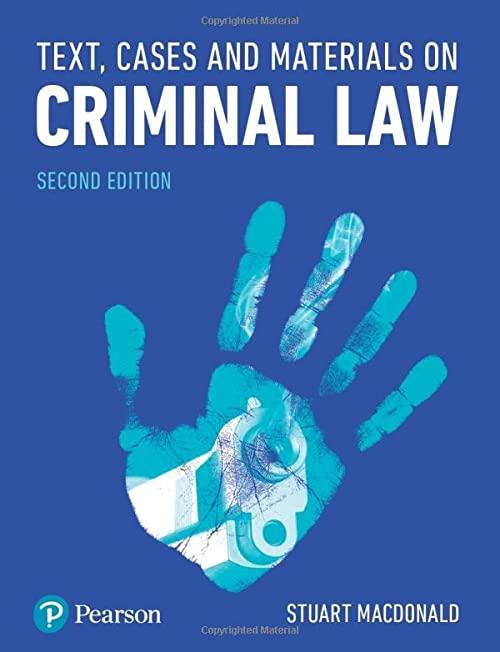Question
The Consumer Credit Act 1974 (CCA 1974), [1] as amended by the Consumer Credit Act 2006 (CCA 2006), [2] has been a cornerstone in regulating
The Consumer Credit Act 1974 ("CCA 1974"),[1] as amended by the Consumer Credit Act 2006 ("CCA 2006"),[2] has been a cornerstone in regulating consumer credit, loans, and related financial agreements in the United Kingdom ("UK").[3] The CCA 1974 gives rights to debtors that receive credit under a 'regulated agreement',[4] with Section 189(1) defining a regulated agreement as a 'consumer credit agreement' or 'consumer hire agreement'.[5] The definition of a consumer credit agreement is defined in Section 8(1),[6] and consumer hire agreement in Section 15(1).[7] The nature of these agreements will be explored in subsequent posts in more detail.
The original introduction of the CCA 1974 marked a significant shift towards strengthening debtor and hirer rights, who would otherwise be not well-positioned to enforce their rights in the context of the complexity of credit markets.[8] Criticisms from the credit industry often highlight the CCA 1974 as being outdated and overly biased in favour of consumers.[9] As such, the UK government is currently committed 'to move forward with an ambitious overhaul of the CCA'.[10]
Section 75 of the CCA 1974 is particularly noteworthy.[11] It protects debtors that access credit under a regulated agreement by third-parties other than the supplier of the services or goods being purchased.[12] Thus, the creditor would be 'jointly and severally liable to the debtor' for any 'misrepresentation or breach of contract.'[13] However, these provisions are only applicable for a commercial transaction,[14] of a 'single item' with a cash price between 100 and 30,000.[15] This provision significantly enhances consumer protection by enabling consumers to seek redress not only from the supplier but also from the creditor.
Prior to the CCA 1974, consumer credit was less regulated, somewhat covered by a patchwork of legislation, leading to widespread abuses and a significant imbalance in favour of creditors.[16] After its enactment, various cases have tested the boundaries of creditor's liability under the CCA 1974. For instance, in Durkin v DSG Retail Ltd, the Supreme Court clarified the extent of creditor liability under Section 75, thereby affirming the protective scope intended by the CCA 1974.[17] Subsequent posts will explore the CCA 1974 and ancillary orders and regulations in further detail.
[1] Consumer Credit Act 1974.
[2] Consumer Credit Act 2006.
[3] Robert Stokes, Commercial Law (10th edn, Sweet & Maxwell 2022) p 359.
[4] Stokes (No 3) p 371.
[5] CCA (No 1) s 189 (1).
[6] ibid s 8 (1).
[7] ibid s 15 (1).
[8] R. M. Goode, 'The Consumer Credit Act 1974' [1975] 34 CLJ 79, 129.
[9] Reforming the Consumer Credit Act 1974 Consultation Response. HM Treasury (July 2023)
[10] ibid.
[11] CCA (No 1) s 75.
[12] ibid s 75.
[13] ibid s 75 (1).
[14] ibid s 75 (3) (a).
[15] ibid s 75 (3) (b).
[16] D. J. Stephens, 'The Consumer Credit Act 1974' [1976] 29 Curr. Leg. Probl. 112.
[17] Durkin v DSG Retail Ltd [2014] UKSC 21.
Respond to the above using OSCOLA references. You may address aspects which include the following:
Consider the application of section 75. Consider the position prior to the establishment of the Act. Consider the reason for establishing the CCA and aspects relating to creditor's liability which have proved difficult to interpret. Assess the different cases on creditor's liability and how they have influenced the development of the statute. Consider whether the law offers protection for debtors and how the law balances the interest of creditors.
Step by Step Solution
There are 3 Steps involved in it
Step: 1

Get Instant Access to Expert-Tailored Solutions
See step-by-step solutions with expert insights and AI powered tools for academic success
Step: 2

Step: 3

Ace Your Homework with AI
Get the answers you need in no time with our AI-driven, step-by-step assistance
Get Started


